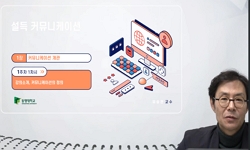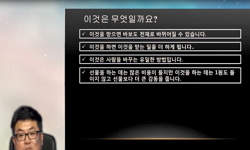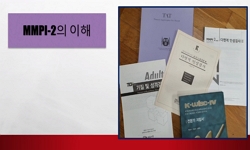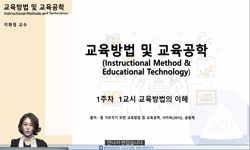This study begins with the assumption that the process of attitude changes toward religion may have different ways of acceptance and processing from the persuasive messages in the area of advertising marketing or political communication. This is becau...
http://chineseinput.net/에서 pinyin(병음)방식으로 중국어를 변환할 수 있습니다.
변환된 중국어를 복사하여 사용하시면 됩니다.
- 中文 을 입력하시려면 zhongwen을 입력하시고 space를누르시면됩니다.
- 北京 을 입력하시려면 beijing을 입력하시고 space를 누르시면 됩니다.
https://www.riss.kr/link?id=T16623565
- 저자
-
발행사항
서울: 동국대학교 일반대학원, 2023
-
학위논문사항
학위논문(박사) -- 동국대학교 일반대학원 , 신문방송학과 , 2023. 2
-
발행연도
2023
-
작성언어
한국어
-
주제어
설득 커뮤니케이션 ; 종교 커뮤니케이션 ; 정보원 유형 ; 메시지 내용의 유형 ; 정교화 가능성 모델 ; 성격 요인 ; 개방성 ; 전도(포교)
-
발행국(도시)
서울
-
기타서명
(A)Study on the Acceptance and Processing of Religious Persuasion Messages : Focusing on the influence of message content and source type
-
형태사항
x, 146 p.; 26 cm.
-
일반주기명
동국대학교 논문은 저작권에 의해 보호받습니다
지도교수: 장하용
참고문헌: p. 101-130 -
UCI식별코드
I804:11020-000000085853
- DOI식별코드
- 소장기관
-
0
상세조회 -
0
다운로드
부가정보
다국어 초록 (Multilingual Abstract)
This study begins with the assumption that the process of attitude changes toward religion may have different ways of acceptance and processing from the persuasive messages in the area of advertising marketing or political communication. This is because religious attitudes are different from the attitudes that are easily formed in a short period of time due to the characteristic that once established, religious beliefs and attitudes do not change for a long time.
Therefore, this study examined the differences in persuasion effect according to religion, assuming the type of message content (personal vs. social), the type of source (non-expert vs. expert), and the individual personality factors as important variables explaining the persuasive effects of the religion messages.
First, the religious persuasion message was divided into personal message and social message by using the elaboration likelihood model. Then, it was expected that the group of religion with a high level of religious belief intensity and existing religious message processing tendency would process religious persuasion messages through the central route. It was assumed that there would be no difference in the information processing ability of religious messages. The type of cognitive processing was defined as the usual processing tendency of neutral religious messages.
As for peripheral cues, the variables were composed of expertise among the source's credibility, openness of personality factors, and emotional instability. In order to examine the influence of source's expertise, the effect was measured by dividing them into expert group and non-expert group.
In this study, religious attitude refers to the degree of awareness of religion, and religious attitude was classified into attitude toward religion itself and attitude toward religious behavior. This is because attitudes toward religion itself are areas of belief, and religious acts are areas of likes and dislikes on specific issues with different dimensions. The research questions are as follows.
Research question 1. Is there a difference in the persuasion effect of religious messages according to the processing of the central route and the peripheral route?
Research question 2. Is the persuasion effect of religious messages different depending on the content of the message (personal vs. social) and the type of source (non-expert vs. expert)?
Research question 3. Does the persuasion effect according to the content of the message and the type of source vary depending on the individual's openness and emotional instability?
Research question 4. What is the difference in the relative influence of various factors involved in the persuasion effect of the message?
A total of 789 questionnaires were analyzed through purposive quota sampling method, divided into four groups: personal message vs. social message group and general informant vs. expert informant group. The result shows that attitude change in the peripheral route processing was greater than the central route. In the central route processing, nearly 60% of the respondents had more than 20 years of religiosity, resulting in a ceiling effect, so there was not much change in attitude. In the peripheral route processing with a relatively large change in attitude, openness was found to be the main variable in attitude change among the expert source and personality factors.
With regards to the type of message content, attitude change by the personal message was greater than the social message as a whole. This seems to be related to the undulating faith, a distinct religious characteristic of Korean that prays for personal well-being and family happiness. In the type of source, messages from expert showed a greater change in attitude than non-expert. This result is consistent with studies that have verified the credibility of sources among studies using the elaboration likelihood model. However, unlike the expert source effect in the existing advertising marketing field, the religious persuasion message was found to produce a meaningful persuasion effect even for non-expert source. Such result is different from previous studies.
For personality factors, openness was found as a major variable in attitude change, but emotional instability appeared to have no correlations with attitude change. Also, according to the result of investigating various factors together related with the persuasion effect of the message, in addition to the types of message content and source, the persuasion effects of the religious message were found to be affected by religious status, gender, age, and so on.
This research differs from others, considering it expanded the academic realm of religious communication, tested the persuasion effect by dividing the contents of religious persuasion messages into personal and social types, and verified individual personality factors as persuasion effect variables. In addition, this study provides practical implications to the religious community in that it presented the direction of creating messages of evangelism (mission) using the characteristics of non-religious people.
Keywords: persuasive communication, religious communication, type of source, type of message content, elaboration likelihood model (ELM), personality factors, openness, evangelism (mission)
국문 초록 (Abstract)
본 연구는 종교에 대한 태도 변화를 일으키는 과정이 광고마케팅이나 정치 커뮤니케이션 영역에서의 설득 메시지와 다른 수용과 처리 방식을 갖고 있을 것이라는 가정에서 출발한다. 종교...
본 연구는 종교에 대한 태도 변화를 일으키는 과정이 광고마케팅이나 정치 커뮤니케이션 영역에서의 설득 메시지와 다른 수용과 처리 방식을 갖고 있을 것이라는 가정에서 출발한다. 종교적 태도는 한번 가지면 수십년씩 그 신념과 태도가 변화하지 않는다는 특성 때문에 단기간에 쉽게 형성되는 태도와는 다를 것이기 때문이다.
이에 메시지 내용의 유형(개인적 vs. 사회적)과 정보원의 유형(일반인 vs. 전문가) 그리고 개인적 성격 요인을 메시지 설득 효과를 설명하는 중요 변수로 상정하고, 그에 따른 설득 효과의 차이를 검증해 보았다.
우선 정교화 가능성 모델의 연구 모형을 차용해 종교적 설득 메시지를 개인적 메시지와 사회적 메시지로 나누었다. 그리고 종교를 가지고 있고, 신앙심 강도, 기존 종교 메시지 처리 성향 등이 높은 집단이 종교적 설득 메시지를 중심 경로로 처리한다고 보았다. 종교적 메시지의 정보처리 능력은 차이가 없을 것으로 가정하였고, 인지처리 유형은 중립적 종교 메시지의 평소 처리 성향으로 정의하였다.
주변 단서로는 정보원의 공신력 가운데 전문성과 성격 요인의 개방성 및 정서적 불안정성으로 변인을 구성했다. 정보원의 전문성에 대한 영향력을 살펴보기 위해 전문가 집단과 일반인 집단으로 나누어 그 효과를 측정했다.
본 연구에서 종교 태도란 종교에 대한 인식 정도를 의미하며, 종교 태도를 종교 자체에 대한 태도와 종교적 행위에 관한 태도로 구분했다. 종교 자체에 대한 태도는 신념의 영역이고, 종교적 행위는 구체적 이슈에 대한 호불호(好不好)의 영역으로 서로 다른 차원이기 때문이다.
연구 문제는 다음과 같다.
연구문제 1. 중심 경로와 주변 경로의 처리에 따라 종교적 메시지의 설득 효과의 차이가 발생하는가?
연구문제 2. 종교적 메시지의 설득 효과는 메시지 내용(개인적 vs. 사회적)과 정보원의 유형(일반인 vs. 전문가)에 따라 차이가 있는가?
연구문제 3. 메시지의 내용과 정보원 유형에 따른 설득 효과는 개인의 개방성과 정서적 불안정성에 따라 달라지는가?
연구문제 4. 메시지의 설득 효과에 관여하는 다양한 요인들의 상대적 영향력에 어떤 차이가 있는가?
개인적 메시지와 사회적 메시지 그룹, 일반인 정보원과 전문가 정보원 그룹 등 총 4개의 집단으로 구분해 의도적 비례할당 표본추출법을 통해 총 789부의 설문지를 분석한 결과, 중심 경로보다는 주변 경로의 처리에 의한 태도 변화가 더 크게 나타났다. 중심 경로의 경우 신앙심 강도가 20년 이상인 응답자가 전체의 60% 가까이 되어 천장 효과(ceiling effect)가 발생해 태도 변화가 크지 않았다. 상대적으로 태도 변화가 큰 주변 경로의 경우, 전문가 정보원과 성격 요인 가운데 개방성이 태도 변화의 주요 변인으로 밝혀졌다.
메시지 내용 유형의 경우, 전체적으로 사회적 메시지보다 개인적 메시지에 따른 태도 변화가 컸다. 이는 개인의 안녕과 가정의 행복을 기원하는 한국의 종교적 특성인 기복 신앙과 관련이 있는 것으로 보인다. 정보원 유형에서는 일반인보다는 전문가 정보원의 메시지가 더 큰 태도 변화를 나타냈다. 기존의 정교화 가능성 모델을 활용한 연구 가운데 정보원의 신뢰성을 검증한 연구들과 일치하는 결과이다. 다만 기존 광고마케팅 영역에서의 전문가 효과와 달리, 종교적 설득 메시지는 일반인 정보원도 의미 있는 설득 효과를 만드는 것으로 밝혀져 기존 연구와의 차별점이 발견되었다.
성격 요인의 경우, 개방성은 태도 변화에 주요한 변인으로 검증되었지만 정서적 불안정성은 태도 변화와 상관관계가 없는 것으로 밝혀졌다. 그 외에 메시지의 설득 효과를 나타내는 다양한 요인들을 함께 검증한 결과, 종교적 메시지의 설득 효과는 메시지 내용의 유형과 정보원의 유형 이외에도 종교 유무, 성별, 연령 등에 영향을 받는 것으로 드러났다.
본 연구는 종교 커뮤니케이션의 학문적 영역을 확대하고, 종교적 설득 메시지의 내용을 개인적 유형과 사회적 유형으로 구분해 설득 효과를 검증했다는 점, 그리고 개인의 성격 요인을 설득 효과의 변수로 검증한 것에 다른 연구들과 차별점을 가지고 있다. 또한 본 연구는 무종교인의 특성을 활용해 전도(포교) 메시지 작성의 방향성을 제시했다는 점에서 종교계에 실용적 함의를 제공하고 있다.
목차 (Table of Contents)
- 제 1 장 서론 1
- 제 1 절 연구의 배경 1
- 제 2 절 문제제기 5
- 제 2 장 연구에 관한 이론적 배경 10
- 제 1 절 설득 메시지의 개념 10
- 제 1 장 서론 1
- 제 1 절 연구의 배경 1
- 제 2 절 문제제기 5
- 제 2 장 연구에 관한 이론적 배경 10
- 제 1 절 설득 메시지의 개념 10
- 1. 설득 메시지의 내용 11
- 1) 주장의 양 12
- 2) 주장의 구체성 13
- 3) 메시지 측면성 16
- 4) 결론 제시 18
- 2. 설득 메시지의 형식 20
- 3. 설득 메시지의 처리 방식 22
- 제 2 절 설득효과에 관한 이론: 정교화 가능성 모델 23
- 1. 종교적 설득 메시지의 처리 경로 27
- 2. 중심 경로로 처리되는 관여 변인 28
- 1) 메시지 처리 동기 29
- 2) 메시지 처리 능력 30
- 3) 인지처리 유형 31
- 3. 주변 경로로 처리되는 관여 변인 33
- 1) 정보원의 공신력 33
- 2) 개인 특성과 성격 변인 34
- 제 3 절 종교적 설득 메시지의 특징 35
- 제 4 절 종교적 메시지의 설득 관여 요인들 39
- 1. 관여도: 종교 유무, 신앙심, 종교 메시지 관심도 39
- 2. 메시지 내용의 유형: 개인적 vs. 사회적 40
- 3. 정보원의 유형: 일반인 vs. 전문가 43
- 4. 성격 요인 44
- 제 3 장 연구 모형과 연구 문제 48
- 제 1 절 연구 모형 48
- 제 2 절 연구 문제 49
- 제 4 장 연구 방법 51
- 제 1 절 연구대상 및 자료의 수집 51
- 제 2 절 조사도구 53
- 1. 설문지의 구성 내용 53
- 2. 변인의 조작적 정의 55
- 1) 중심 경로와 주변 경로 55
- 2) 메시지 내용의 유형 55
- 3) 정보원 유형 56
- 4) 성격 요인 56
- 5) 종교에 대한 태도 57
- 3. 타당성과 신뢰성 분석 57
- 1) 종교 자체에 대한 태도 설문지의 타당성과 신뢰성 분석 58
- 2) 종교적 행위에 관한 태도 설문지의 타당성과 신뢰성 분석 59
- 3) 성격 요인 설문지의 타당성과 신뢰성 분석 60
- 제 3 절 자료 처리 및 분석 방법 61
- 제 4 절 표본의 일반적 특성 62
- 1. 조사대상자들의 인구통계적 특성 62
- 2. 기술통계분석 65
- 제 5 장 분석 결과 69
- 제 1 절 메시지의 처리 경로에 따른 설득 효과 69
- 제 2 절 메시지 내용의 유형과 정보원 유형에 따른 설득 효과 71
- 1. 메시지 내용의 유형에 따른 설득 효과 71
- 2. 정보원의 유형의 차이에 따른 설득 효과 74
- 3. 메시지 내용의 유형과 정보원의 유형에 따른 설득 효과 77
- 제 3 절 개인의 성격 요인에 따른 설득 효과의 차이 79
- 1. 성격 요인에 따른 메시지의 설득 효과 79
- 2. 메시지 내용의 유형과 성격 요인의 상호작용 효과 82
- 3. 정보원 유형과 성격 특성의 상호작용 효과 84
- 4. 설득 관여 요인들의 상대적 영향력 86
- 제 6 장 결론 90
- 제 1 절 중심 경로 vs. 주변 경로 91
- 제 2 절 메시지 내용의 유형과 정보원의 유형 92
- 제 3 절 개인의 성격 요인 95
- 제 4 절 종교적 메시지의 생산 96
- 제 5 절 연구의 의의와 한계 98
- 참고 문헌 101
- ABSTRACT 131
- 부록 - 설문지 135













